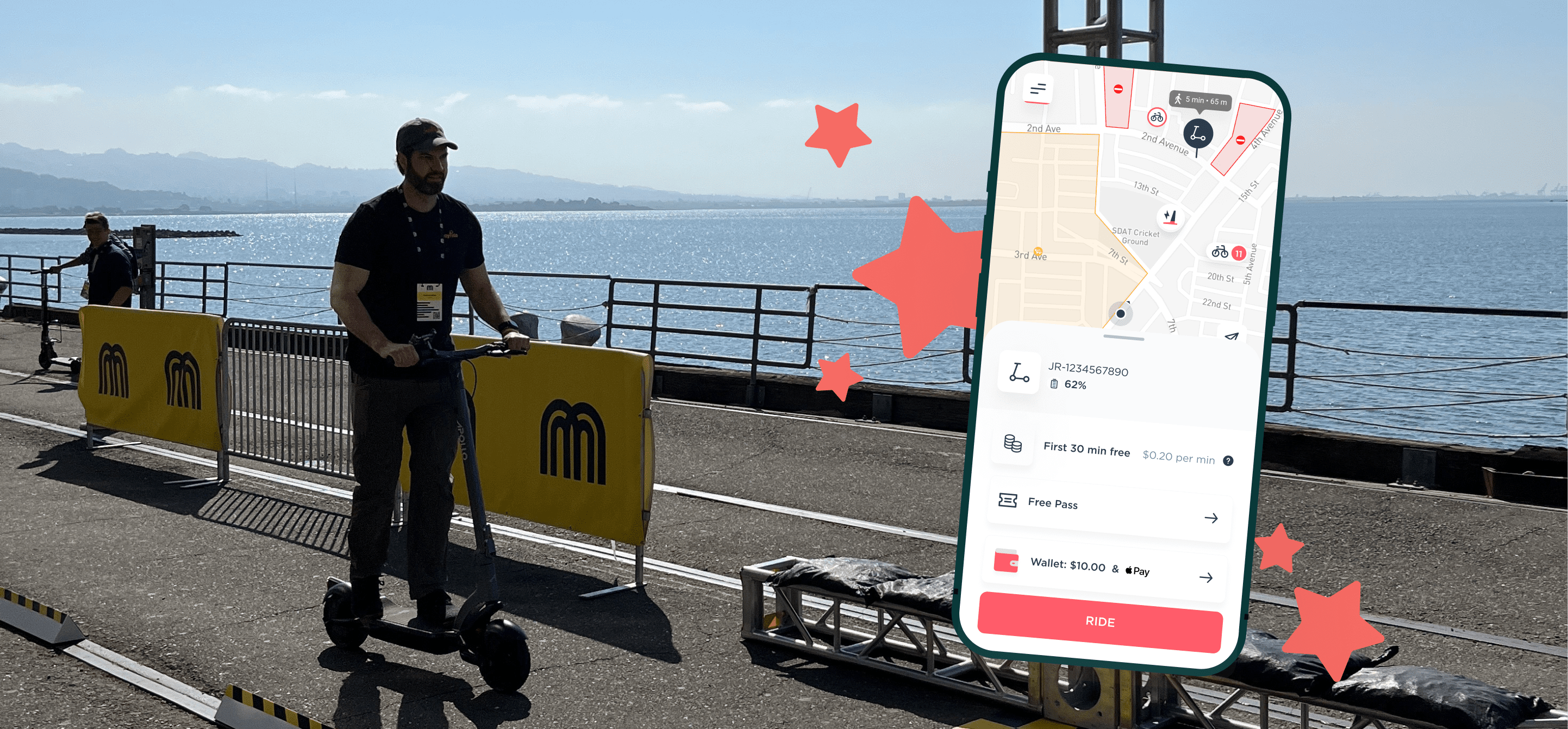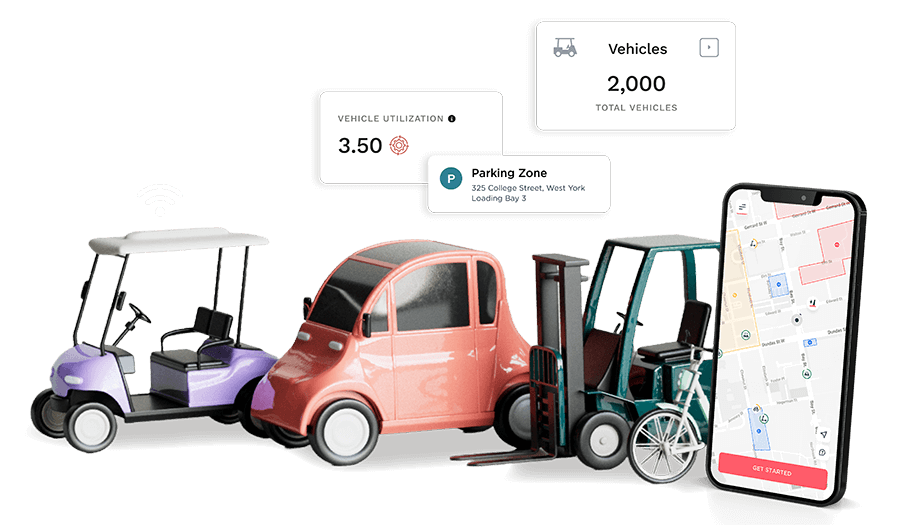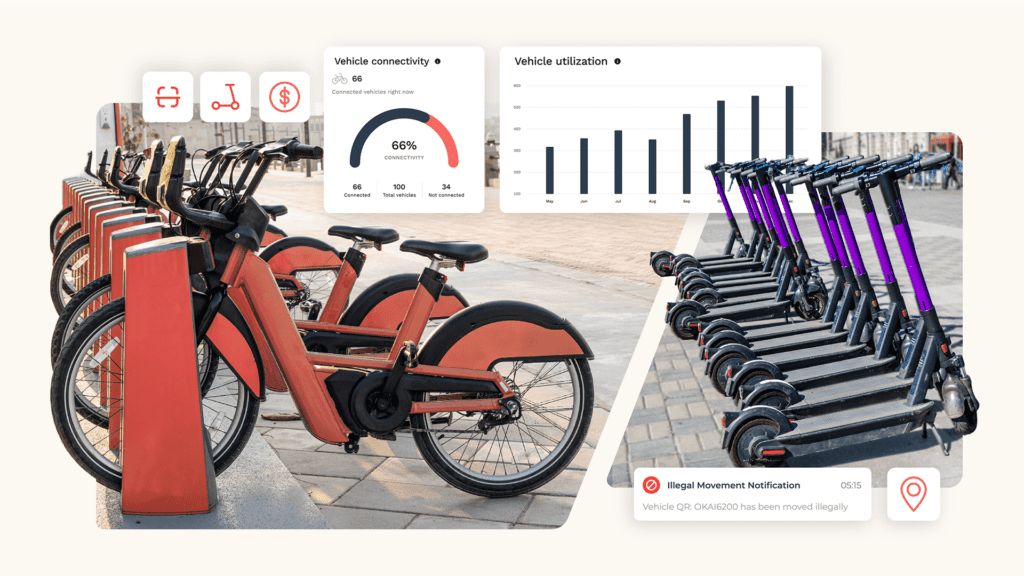Excelling within the micromobility market has sharply focused on growth over profitability for the last 10 years. For the last 10 months, however, priorities have shifted, and many shared mobility operators are measuring success based on margins and profitability. How has the micromobility landscape changed with this new direction and what does it mean to achieve financial and operational stability in 2022 and beyond?
This very topic was explored at September’s annual Micromobility America conference, during a panel discussion aptly titled In Pursuit of Operational Excellence. Joyride’s Head of Sales, Sophie Belec-Cross, was joined by Bryan Ovalle, Co-founder and COO at Hello Llama, Emil Nnani, Founder and CEO at Boaz Bikes, and Joost Legtenberg, Business Development, Allegion / AXA-IN, to define what operational excellence means today and how companies can achieve it.
With a decade of experience behind us, our barometer for measuring a fleet’s success has been well established. In fact, the recipe for profitability and progress boils down to three fundamental ABCs of micromobility:
Automation
It’s impossible to operate a fleet of shared vehicles without the scooters, bikes and mopeds themselves. That’s a given. What’s not always so obvious is the crucial need for a full suite of software that powers the whole process. Software is the force behind actually renting, paying and tracking vehicles, and the more fleet operators understand how to best harness software tools, the better position they are in to have leaner operations and more robust bottom lines.
In addition to having the fastest Rider app on the market, Joyride operators save time and money through automated tools like Operational Hours, which enables them to pre-set when their fleets will be operable and when they will shut down for the day, and Event Notifications, which are messages generated to vehicle riders to let them know about certain alerts (such as impromptu road closures). Having an automated system for support tickets means operators can instantly assign and respond to issues experienced by riders at unparalleled speeds, leading to happier customers and more process-driven operations.
The UK’s Zipp Mobility is a prime example of using automated software to excel within the competitive micromobilty space. The company has expanded quickly (growing four-fold in its first six months alone) with a stellar track record for lean operations and stellar customer success due to the team’s response to in-app ticket issues. In the Philippines, meanwhile, Moovr has tapped into the power of automation to launch an entire revenue stream based on in-app advertising.
The fleets that leverage the power of AI are also keeping pace with changing technology to enhance their fleet offerings. Look at what Hello Llama is doing with regards to optimizing mobility safety, and what a number of our software partners are providing as add-on plugins (ID verification, alternative payment methods, to name a few). The operators that are taking their software capabilities one step further are the ones who are running leaps and bounds ahead of antiquated competition.
Budgeting
Anyone who runs a business knows the importance of budgeting expenses. In the world of micromobility, the companies that have the smoothest launches and growth trajectories are the ones that really understand the industry’s upfront and operating expenses from the get-go.
Establishing a shared mobility system requires budgeting the cost of vehicles, which ranges based on fleet size, the types of vehicles and quantity, as well as insurance, software and paying employees. Let’s get a little more specific:
In terms of total outlay, Joyride customers typically budget approximately $100,000 for a city-focused fleet range of 50 vehicles. This number will fluctuate depending on insurance, capex, opex and determining how many members you will need on your team. Most of the costs are upfront, such as vehicle purchasing. But don’t go for the best price out there, do your right research and use a trusted resource like Joyride Garage that curates the best vehicles on the market at the most reliable prices. In fact, operators who use Joyride Garage e-commerce shop to purchase vehicles are ultimately saving money through preferred pricing, low MOQs and local shipping.
Meanwhile, items like software are paid monthly under a subscription model. Rather than building your own stack in-house or falling into a revenue-share program, outsourcing software to Joyride can lower your operating costs by 93%.
Fleet operators who invest wisely and manage their operations efficiently will usually recoup their upfront costs in three months, meaning most of our customers are profitable by the fourth month in operation.
Running lean is the secret sauce to success. Be sure you’re streamlined in your operations and not incurring unnecessary costs that can be handled by software providers and other third-party specialized services. The most profitable and forward-thinking operators are the ones who are obsessed with managing their burn rates and who understand fluctuating factors like seasonality, vehicle replacement costs, paying for rebalancing vehicles and the varying costs associated with global expansion. Growing quickly can come at a price, but the smart fleets are the ones that don’t get too far ahead of themselves too quickly.
Communication (and City Compliance!)
Almost always, the operators who strategically communicate with their internal team, customer base and city regulators are the ones who are going to be the most profitable (and popular).
Team-management should be handled through a sophisticated backend system that can assign tasks and track employee and customer activities in real time. This same operating system is used to communicate with customers through marketing efforts like email/SMS marketing campaigns (which can be tied to local retailers, such as a free cup of coffee at your next coffee shop stop). Using tools like Joyride’s driving reaction test plugin Safe Ride, for example, is a way to communicate with customers on how to safely operate your equipment.
Cities also require constant communication with fleet operators, provided this is a business-to-consumer rental service. (For more information about operating a private business-to-business fleet at a hotel, click here).
Securing highly coveted tenders to run a fleet in a city is a big deal, and it requires a large amount of compliance. This relates to data regulations through feeds like MDS and GBFS in the US, and providing insights that can shape local infrastructure and other policies. The ultimate goal is to get more people out of cars and onto sustainable mobility options like scooters and bikes, and city officials play a significant role in shaping policies that will make this happen faster and more smoothly. The operators who work with cities will win more permits, thereby growing their fleets and revenue potential.
On the other end of the spectrum, communication is crucial among micromobility software providers. It’s not an easy feat powering hundreds of fleets worldwide, and Joyride commits to constant contact with our operators to make sure things are moving as smoothly as possible. This means round-the-clock customer service and providing our operators with ongoing learning tools to ensure their fleets are best-positioned for market domination.
We also like to communicate with the mobility community at large. On that note, see how we spent our week in San Francisco at Micromobility America!
To learn more about Joyride’s full range of micromobility services, contact us here.







